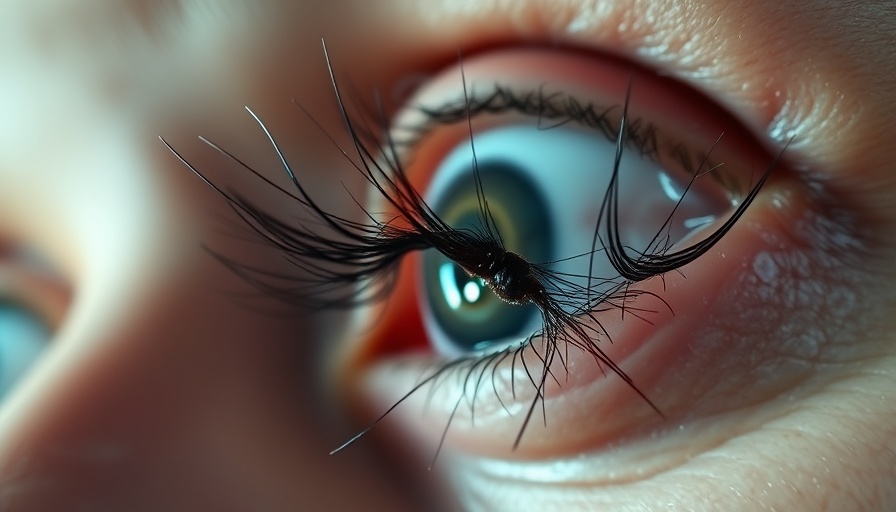
Understanding the Unseen: Demodex Mites and Your Eyelashes
Have you ever looked closely at your eyelashes and wondered what small entities might be living there? The truth may surprise you: countless demodex mites are likely nestled among your lashes, silently residing at the base of your hair follicles and in the oil glands of your skin. These tiny, microscopic creatures thrive on the oils produced by your skin. Although they sound alarming, it's important to understand the reality: almost everyone has these mites living on their face, and for the most part, they don't cause harm.
In the video titled 'Do Microscopic Mites Live in Your Eyelashes RIGHT NOW?!', we uncover the world of demodex mites, examining their impact on eye health and why it’s essential to understand their presence.
What Are Demodex Mites and Why Do They Matter?
Demodex mites belong to a family of arachnids that include dermal parasites. While they might not be harmful in small numbers, an overpopulation can lead to various irritating conditions. According to recent statistics, up to 60% of people may experience issues caused by an infestation of these mites, particularly impacting individuals aged 60 and older. If you are experiencing symptoms such as redness, itchiness, or styes, it’s crucial to consider the potential role of these mites in your eyelid health.
Symptoms of Overgrowth: When to Seek Help
One of the telltale signs of a demodex mite overgrowth is the formation of an eyelash collar—an unpleasant buildup of mite eggs and waste that can lead to severe eye issues. This accumulation can become very uncomfortable, leading to inflammation, dry eyes, and even cholazions. If you're noticing persistent symptoms, it's worthwhile to consult with a healthcare professional, as they can assess whether demodex mites are a factor in your eye discomfort.
Treatment Options: From Home Remedies to Professional Care
Managing demodex blepharitis requires a multi-step approach. Initial treatment often starts with eyelid hygiene practices, such as using wipes containing tea tree oil. While these can be effective for some, many find that they merely scratch the surface of the problem, needing extended periods of application to notice significant results.
A more robust option that’s gaining traction includes professional eyelid cleaning. This method uses specialized gels and handheld instruments to remove any significant buildup while working in tandem with daily cleaning routines to tackle infestations thoroughly.
A New Hope: FDA-Approved Treatments for Demodex Blepharitis
In a modern development, the FDA recently approved Xdemvy, a medication that uses lotilaner, an antiparasitic agent designed to eradicate demodex mites. Administered through eye drops, this game-changing treatment has shown impressive efficacy, significantly improving symptoms like irritation and redness for many patients. While cost and insurance issues may pose a barrier, those who have struggled with chronic demodex-related issues may find it worth exploring.
Connecting Our Health: The Rare Link Between Demodex and Rosacea
Additionally, the connection between demodex mites and rosacea deserves mention. This inflammatory skin condition can also have implications for eye health, as it can exacerbate symptoms often linked with demodex infestions. If you find that you struggle with rosacea, addressing any potential demodex overgrowth concurrently could be beneficial.
Final Thoughts: Keep an Eye on Your Eyelash Health
As fascinating as they are minute, demodex mites remind us that our bodies are home to countless microorganisms. Most of the time, they cause no issues, but being aware of their presence is key to maintaining eye health. Regular eyelid hygiene and consulting with a healthcare provider can help manage any potential problems before they escalate.
Keep learning and exploring ways to ensure your overall well-being. The journey towards better health often begins with small, informed steps. For those eager to dig deeper, look into rosacea’s connection to demodex or your local resources for eyelid health treatments.
 Add Row
Add Row  Add
Add 




Write A Comment